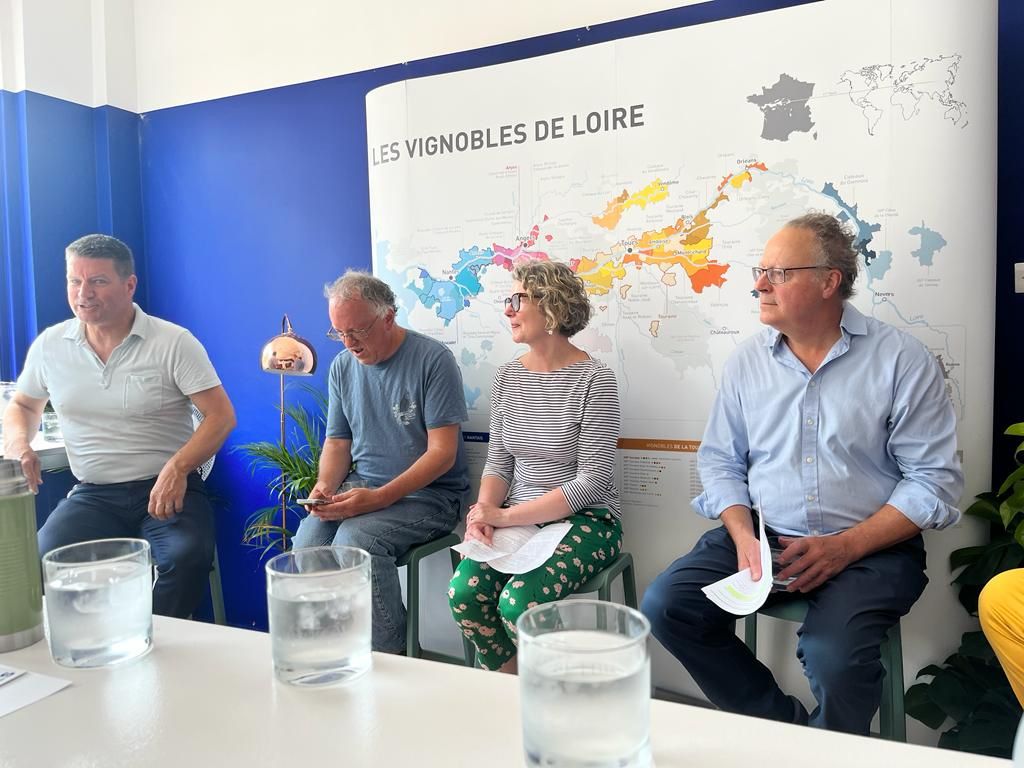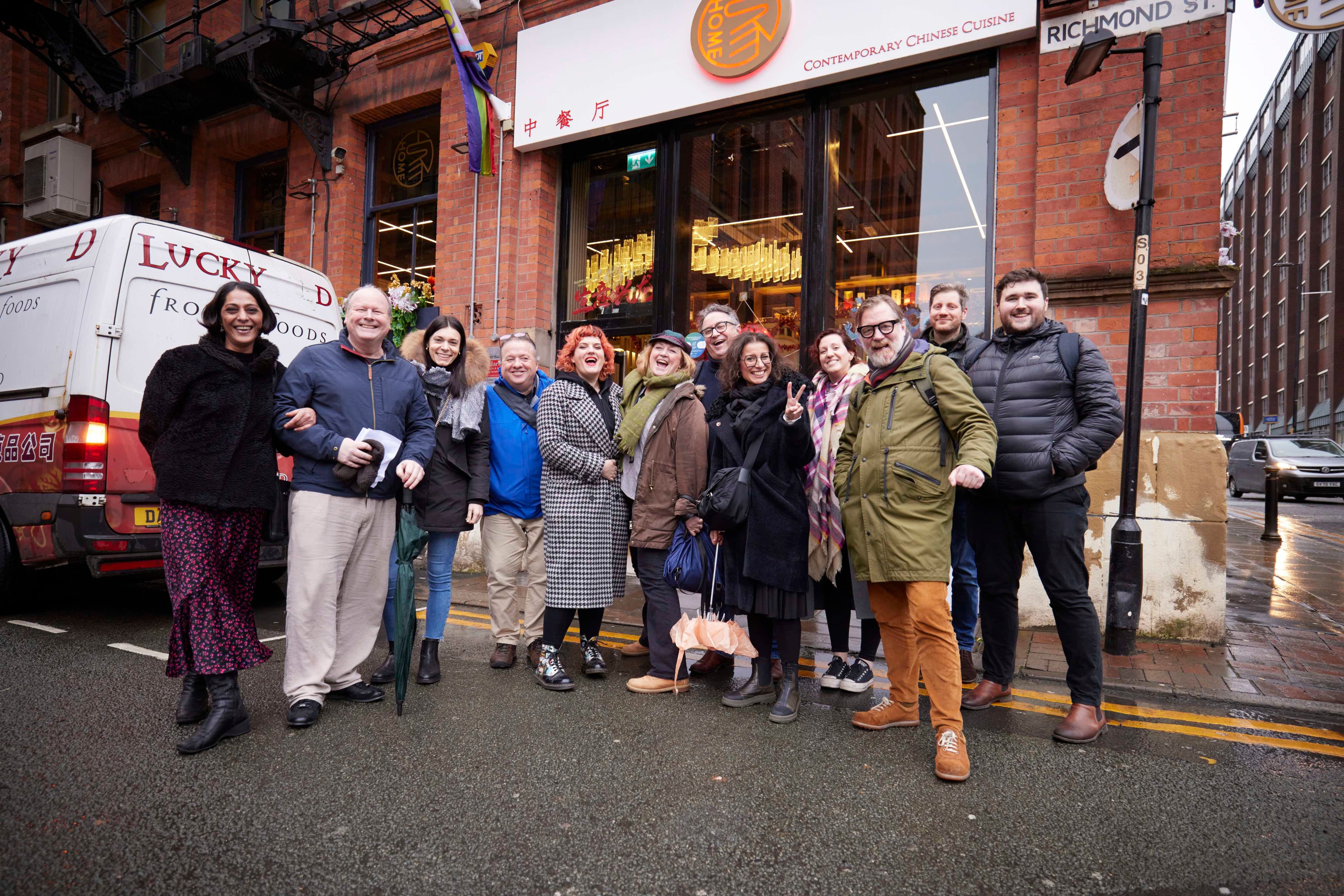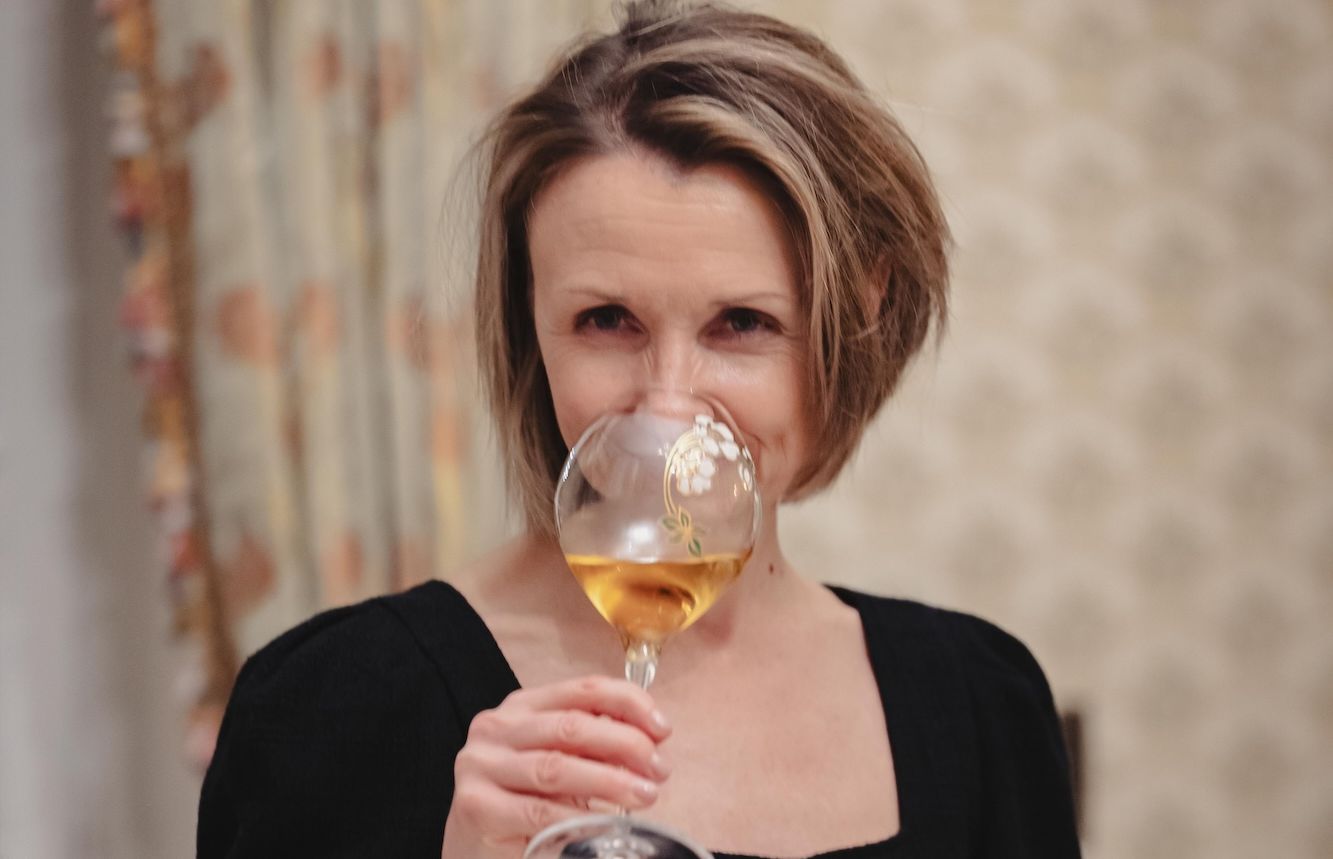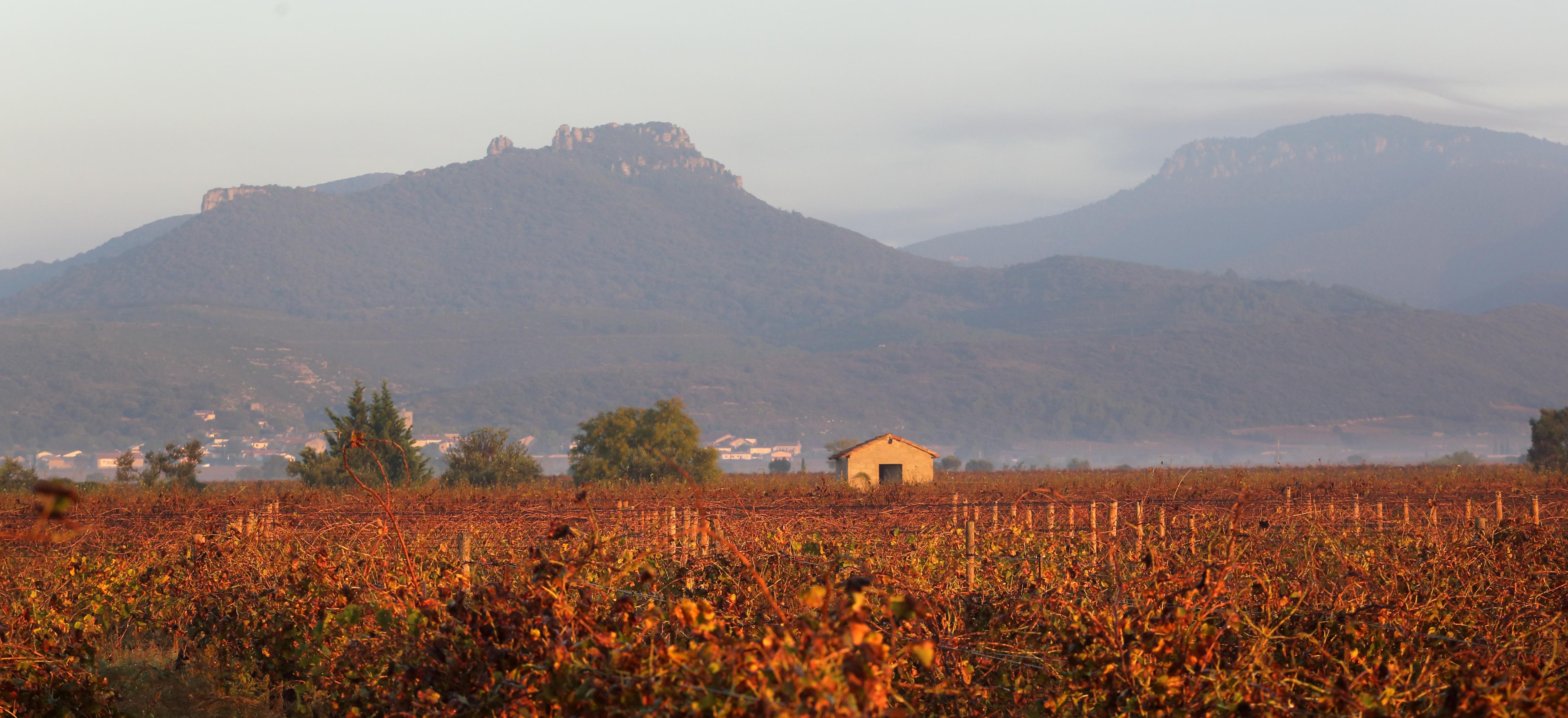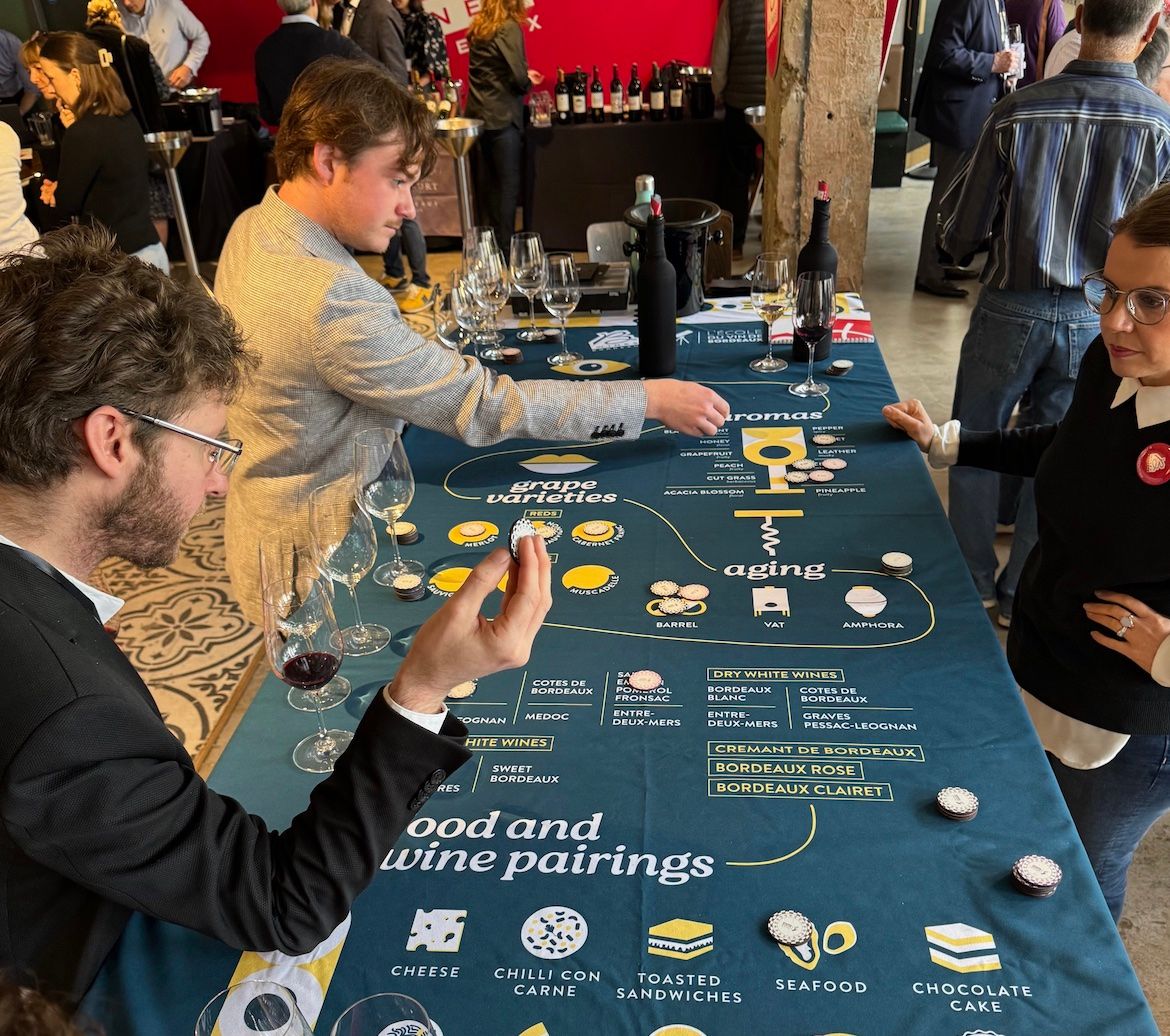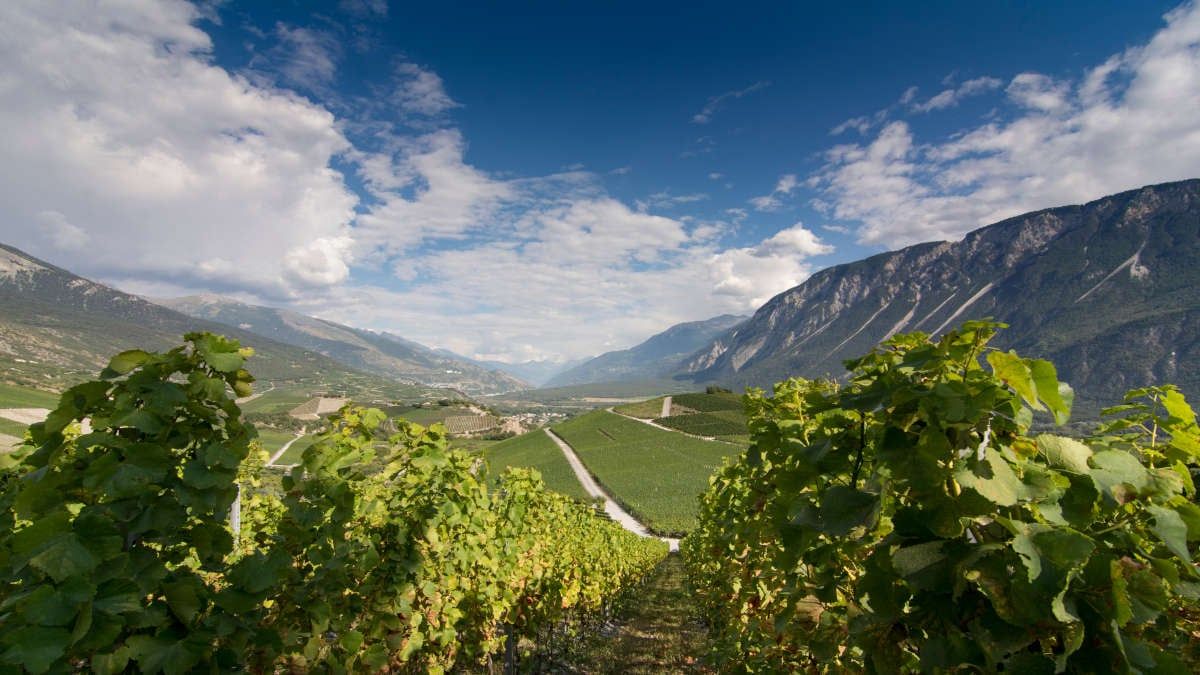Our thanks go to the trade panel who took part in the recent panel debate at the Loire Valley Vines‘ Bloom Big tasting. They included: Guy Woodward, wine writer and panel chair; Heather Dougherty, wine educator, Red, White & Rosé; Douglas Wregg, sales and marketing director, Les Caves de Pyrene; Simon Taylor, owner of Stone Vine & Sun; and representing the Loire Valley Domitille Coste de Bagneaux, export director, Baudry-Dutour; and Alban Foucher, business manager at Domaine de la Seigneurie.
The Loire Valley needs little introduction, being one of France’s most well-known wine producing areas. It is the country’s third largest appellation reaching from the Atlantic coast to the Auvergne and there are three main producing regions – Nantes, Anjou-Saumur and Touraine, all offering a great diversity of wines within a generally temperate climate, and remarkably varied terroirs.
It is that diversity and variety that keeps busy UK wine buyers going back to the region for more.
Like Doug Wregg at Les Caves de Pyrene who says the Loire is now the importer’s most successful French region down, largely to the sheer diversity of styles and varietals it offers consumers. “I believe in educating consumers and the trade, and the Loire is definitely one of our most successful French regions. We have the most growers from Loire, and it offers really good value commercially,” he says.

The Loire Valley is one of the most famous winemaking valleys in the world
Wregg reports varying levels of awareness amongst his customer base, and says that with some, you have to increase their awareness of what he calls “the basics” – the grapes, styles and appellations before moving onto provenance. “But information about farming methods and winemaking techniques is a necessary part of educating the wine drinking audience,” he continues. And given the Loire’s head start in this area, spearheading the organic and biodynamic movements, this is something that Wregg says could be further exploited by the trade, as demand for these wines increases year on year.
“For me, the Loire is where biodynamics in farming vines took off in its modern incarnation and the region is certainly the spiritual home of natural winemaking. The Loire, although it’s a huge region, has a cohesive artisan wine culture – one that respects traditions, but is also dynamic and experimental, and considering that the trade should be looking to attract new generations of drinkers to wine, then it is important to highlight areas that might be important to young consumers; responsible, regenerative farming; working without chemicals, winemaking without additives, ethical business practice and so forth.”
However, in recent years the region has faced a number of considerable challenges, from adverse climatic conditions including drought, frost and heatwaves which have resulted in some producers losing much of their production.
Climate change and resultant higher temperatures are also affecting the very characteristics of some of the wines which made them so popular with wine drinkers in the first place.
The Loire is also having to face up to new competition from countries and regions around the world all looking to make lighter, fresher styles of wine.
Younger drinkers
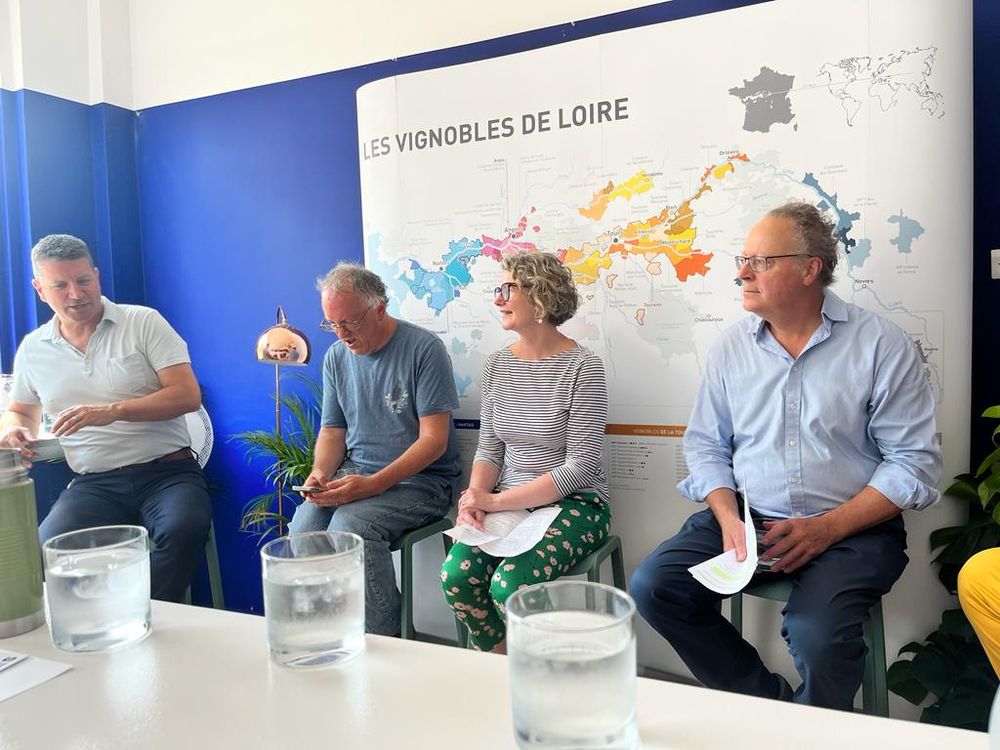
The Buyer and Loire Valley Wines teamed up to host a panel debate, chaired by Guy Woodward, to assess the Loire’s opportunities in the UK
The most immediate challenge it faces, says Simon Taylor, owner of Winchester-based wine merchant Stone Vine & Sun, is in getting more of the younger wine drinking generation following their parents and getting to know, understand and love the region.
He points out that older consumers, who started drinking 30 – 40 years ago at a time when travel options were more limited were far more likely to fire up the Volvo, take the ferry to France, visit the chateaux of the Loire, drink the wines and get to know the appellations. But as the world has opened up and travel has become cheaper and more accessible, younger consumers are far more likely to bag a cheap flight to Bogota or Buenos Aires than head to Blois.
“The region is not now getting the same core of people who understand the region and they have no inkling of what grape varieties come from the Loire,” he claims.
Consumer awareness
While wine educator and ambassador Heather Dougherty largely agrees with this view, she believes there are “pockets of awareness” amongst UK consumers, but says it is “patchy and inconsistent”.
“When I get the chance to put a range of Loire wines in front of [consumers] they will always find something that appeals,” she says. “As always, the sheer diversity of the region comes into play here – people may not realise that their Touraine Sauvignon is actually from the Loire, or that it has any link to, say, Chinon or Bourgueil. I do think it’s improving, but again it’s inconsistent – there was probably more awareness of Muscadet in years gone by than there is now.”
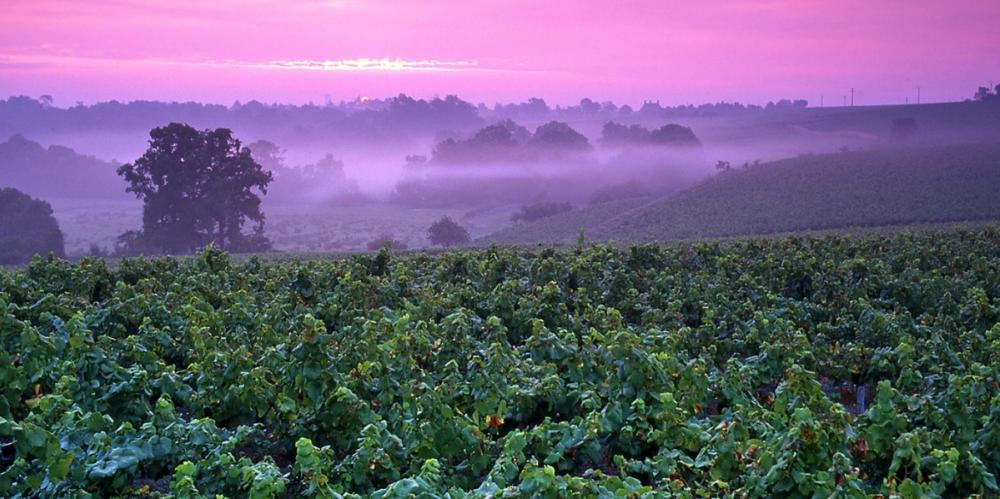
The Loire’s varying climates and terroirs play a huge role in the range of styles being made
The extent to which Muscadet had fallen off consumers’ radar is exemplified by Caves de Pyrene’s Douglas Wregg who was one of the first wine merchants in the country to start importing Picpoul de Pinet. Initially the Guildford-based wine merchant promoted it to their customers as “the Muscadet of the South” when the grape variety from the Languedoc was largely unknown in the UK market.
After a couple of years and with its ubiquity and growing consumer awareness, Wregg started using the reverse analogy by promoting Muscadet, one of the Loire’s flagship variety, as “the Picpoul of the North!”
“I’m not sure we were very original in doing that, but we had a very good example of the grape and from a standing start sold tens of thousands of bottles of Picpoul in no time. Thinking that this salty, fresh style was appealing, we turned our attention to Muscadet sur Lie and jokingly called it the Picpoul of the North. Sales rocketed, though I’m not sure if it was the reference to Picpoul or the fact that the wines were excellent examples of quality and value. Anyway, we started with one producer and ended up working with four and sales increased by fourfold in a very short period.”
Since then Wregg claims the perception of Muscadet has changed considerably – and for the better. “The basic level has improved and there are now some very serious wines to be found,” he says.
A region of diversity

The Loire river has a huge role to play in influencing the types of wine being made and varieties planted throughout the Loire
The diversity of the region is something of a double-edged sword, the panel agreed, with no one varietal or style that people are able to readily associate with it.
“I think it’s fair to say there isn’t a single perception of the Loire amongst consumers,” says Dougherty. “Stylistically the obvious thing that connects the different appellations is the river. Diversity is great, and if we do a tasting of eight wines you won’t be bored because there are so many styles. But it’s also a stumbling block because nothing immediately obvious springs to anyone’s mind when they think of the Loire.”
Domitille Coste de Bagneaux, export director of Chinon-based Baudry & Dutour, which exports around 10% of its total production, of which around 3-4% is shipped to the UK, is a strong believer in the Loire’s diversity.
“This is the biggest strength of the Loire, with several varieties and traditions,” she says. “There are many producers with different practices and a great dynamism there. I think Loire Valley wines offer among the best deals in terms of the pleasure to price ratio. Because we are in the north part of France, you can find a good balance which we hope will last despite global warming.”
She says the Loire is well placed to produce wines for every occasion. “They are very flexible in terms of pairings, and that do not overwhelm your palate. These are not ‘bodybuilder’ wines, there is still some delicacy to them. The evolution that occurs with the aging of these wines is also wonderful – not all wines are made for aging, but some can reveal a new face.”
Taylor also likes the fact the region is not dominated by big brands or appellations. He explains: “One thing that is good for the trade and for consumers is that the Loire doesn’t have the equivalent of a Chateauneuf du Pape – a big area that dominates the discussion or the debate and commands high prices. Whereas in the Loire it is still possible to get great wines at good prices. I think of the Loire as a collection of regions really, rather than a single region, which can add to the confusion.”
That said with no overarching Loire brand, be that a region, a producer or a sub variety to lead the way, the panel agreed it was difficult for the area to promote itself in a coherent, unified way.
Driving varieties
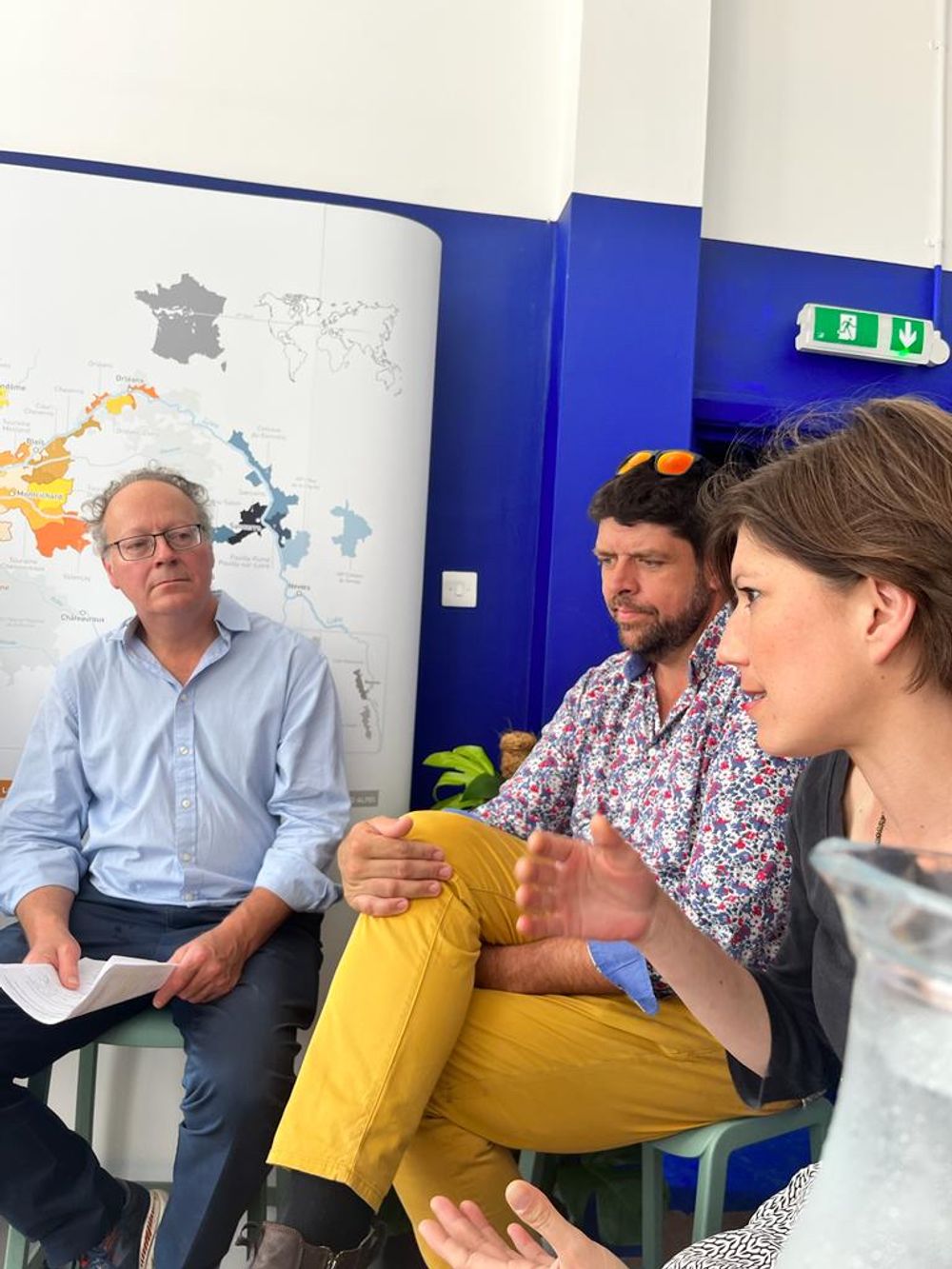
The panel debate also featured insights from two Loire producers: Domitille Coste de Bagneaux, export director, Baudry-Dutour and Alban Foucher, business manager at Domaine de la Seigneurie.
Taylor believes its producers would be helped enormously if they could put the name of the grape variety such as Sauvignon Blanc on the label, rather than, for example, Touraine Sauvignon. “I think the biggest single thing the region should do is to start putting the grape varietals such as Sauvignon Blanc and Chenin Blanc on the labels, the way that Burgundy allows by having Pinot Noir and Chardonnay names on their bottles. This would be huge for the Loire.
“There is a lot of snobbishness in the trade about Sauvignon Blanc, but the public absolutely love it, and if they saw a bottle from the Loire with the grape variety on the bottle, then the chances are hugely increased that they would buy it. But even with Touraine Sauvignon, which has Sauvignon on the label, consumers are not sure if that is the same as Sauvignon Blanc.”
Chenin Blanc is another grape varietal which is hugely popular with UK drinkers, but according to Taylor they tend to naturally gravitate towards South Africa, which they associate more readily with the grape.
“Lots of people in this country will pay £25 for a bottle of South African Chenin Blanc made from ancient vines by some trendy producer, but they would never look at buying a bottle of Savennières, which is just as good – and cheaper. It’s very frustrating. And when consumers look at a bottle of Anjou Blanc they have no idea what is in that bottle – absolutely none. So if it said Chenin Blanc on the label, they would have a much better chance of reaching more consumers.”
He concedes the position is a little more complicated with blends, but says that it would still be a sensible move to put the grape names on the Loire’s labels.
“For a lot of young consumers their starting point is the grape variety rather than the region, while other things such as organic and alcohol levels are also more important and certainly more so than this plethora of names we currently see.”
He claims consumers are deterred from trying the wines because they simply don’t know what it is. “We are an independent merchant where people happily come to us for help and advice, but if you’re in a supermarket there’s no one to advise, so you have no hope.”

Loire Valley Wines launched a new campaign in 2023 under the slogan Bloom Big
However, even putting the name of the varietal on the bottle isn’t enough for some wines, with Muscadet being a prime example. “If you put it in front of consumers they love it because the quality has never been better,” claims Dougherty. “You can’t sell crap Muscadet – it’s hard enough to sell good Muscadet! But older consumers remember when the quality was poor so they are put off by that, and younger drinkers confuse Muscadet with Moscato and think it’s going to be sweet, though are pleasantly surprised when they taste how dry it is. There are some big barriers here which we don’t really consider.”
More to do
Alban Foucher, owner and winemaker at Saumur-based Domaine de la Seigneurie, which has been in his family for over 50 years and produces between 100,000 and 120,000 bottles each vintage, agreed that more needs to be done to promote and spread the message of the Loire. However, in the UK that situation has been hampered and made more problematic by Brexit which has seen the winery’s shipments to the UK pretty much wiped out – the company exports around a third of its total production, and pre-Brexit around 10% of that was destined for the UK.
Added to this has been the inexorable rise in the popularity of New World wines over the past 20 years which has also made the situation more challenging. “We lost our UK importers with Brexit, combined with Covid, but we’re in good discussions now with Amathus Drinks to come back.
“Our main problem is the lack of recognition of the quality of our wines compared to other regions, although that is changing,” he continues.
“I think the English may find it hard to understand the Loire for its multitude of grape varieties from Nantes (Melon de Bourgogne) to Touraine (Sauvignon Blanc) and Anjou with Chenin, Cabernet Franc and other Grolleau Noir, Pineau d’Aunis.”
But this multitude of styles, while confusing, is something Foucher believes is also the region’s strength. “We have every possible style, and we are the first region in France for the production of sparkling wines after Champagne,” he notes.
And the good news, he says, is the UK market is always “open minded” and looking for new wines and styles, along with a definite move to listing and buying more “traditional wines from historical wine producing countries” – which is clearly good news for a region like the Loire. The UK market, he adds, is also receptive to organic producers and the fact they are making different types of wine and is in step with the current trend towards lighter fresher styles of wines – something the Loire excels at and could well open more doors for its producers making this particular style.
Next opportunities
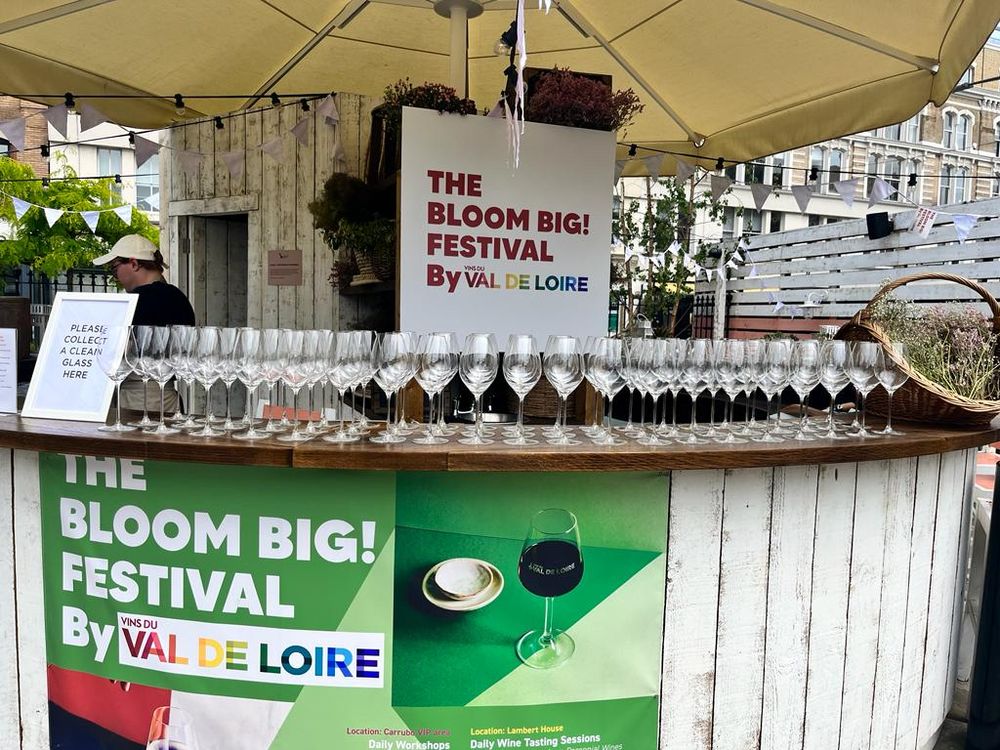
Loire Valley Wines held a Bloom Big Festival for trade and consumers in June
So where do the trade buyers think the best opportunities lie for the Loire in the hugely competitive UK market?
In terms of different styles, Wregg believes some of the lighter reds such as Grolleau and Pineau d’Aunis hold distinct possibilities, and deserve greater exposure than they already enjoy.
“I think the trade should also be emphasising and celebrating the fact that the Loire has so many different terroirs and microclimates and this is reflected in the diversity of wine styles that can be found in the greater region. For example, a Cabernet Franc from Saumur-Champigny may be completely different to one from Bourgueil, ditto a Vouvray will probably be nothing like an Anjou Blanc sec. Therefore, the on (and off) trade can list several examples of the same grape variety without duplicating the style of the wine.”
Rosés, too, were something the panel identified as holding possible potential for the Loire.
“The Loire makes a lot of rosé, but seems to be under-represented in the market,” confirms Dougherty. She believes that dry rosés are a particularly big opportunity for the region. “I think the Loire is possibly missing a trick there,” she says.
However, Taylor is not so sure, believing that that ship has possibly already sailed. “I think that when it comes to rosé, that opportunity has perhaps now closed as everyone is just obsessed with Provence,” he says. “And if they can’t have Provence then they will go for Languedoc as the next best thing – it’s on the Med after all.”
Crémant was also singled out as another potential area of growth for the Loire.
“Crémant in general is becoming a brand of its own, so the Loire can really jump on that – I think the Loire’s rosé sparklings are especially characterful and could help it make more of an impact,” continues Dougherty.
Taylor agreed that the Loire’s sparkling wine represented a big opportunity for the region particularly as the rocketing price of Champagne has pushed it out of reach of many consumers at a time when more demands than ever are being placed on their tightly squeezed budgets.
“Champagne has priced itself out of reach for many, and I can see Crémant de Bourgogne slightly going the same way,” he says. “Peak Prosecco is well and truly over, but there are still a lot of people who want to drink sparkling wine at a party, who don’t want to drink Prosecco, so they are left with Crémant de something. As Champagne prices rise inexorably, there’s plenty of space for French Crémant and I think Crémant de Loire certainly offers better value than Crémant de Bourgogne, and arguably has a better name than Limoux, Alsace or Jura. When we supply wine to a wedding it’s now usually a Crémant, not Prosecco.”
He adds that Stone, Vine and Wine’s cheapest sparkling wine is from the Loire which “we sell tons of” at around £13.95 a bottle. “Quality wise it’s fantastic, and very accessible, with the Chenin Blanc making it a little bit softer and rounder which goes down very well.”
Dougherty concurred with this, adding “Chenin is a gift to that style, as you still have the acidity but with a slightly richer, less minerally profile.”
And as discussed, the panel agreed that Loire Sauvignon Blanc could do even better in the UK market if it was marketed as such, rather than labeled as Touraine Sauvignon.
Exports

Nearly €200m of Loire valley wines is exported every year
Around a fifth of the Loire’s total production is shipped overseas, with exports last year reaching over €196m, or 54m bottles. The biggest market for the region’s wines in volume terms is Germany at over 90,487hl, followed by the US at 68,340hl, Belgium at 55,973hl, the UK 53, 183hl, Canada 27,869hl and Australia 13,851hl. In value terms, the US remains the biggest market at €40,916k, followed by Germany at €36,515, UK at €24,437k, Belgium €19,651k, Canada €17,477 and Australia €5,756.
Just over 42% of exports are white wine, nearly a third (32.5%) are sparkling and the remainder (25.2%) are red or rosé. However, over two thirds (69%) of shipments to the UK are white, with only 15.3% comprising red or rosé, and 15.7% sparkling.
Focus on organics
Loire producers were amongst the pioneers in committing to the environment and now nearly three quarters of Loire Valley wine estates and 80% of the total surface area of vineyards has achieved some sort of environmental accreditation. It was also in the Loire that biodynamic winemaking took its first steps.
Currently 29% of vineyards – around 800 – are certified organic with 11,000 hectares being organically farmed, including 10% with biodynamic certification. By 2030 the Loire wine industry hopes that all wine estates will have some sort of environmental certification.
The key grapes grown in the region are Melon de Bourgogne, which makes up almost a third (30%) of white grape varietals; Sauvignon Blanc (28%); Chenin Blanc (27%); Chardonnay (8%); Divers (8%); and Folle Blanche (3%). As for the reds, Cabernet Franc accounts for the lion’s share of production at 56%, followed by Gamay (18%); Pinot Noir (8%); Grolleau (7%); and Cabernet Sauvignon (5%).
What the future holds
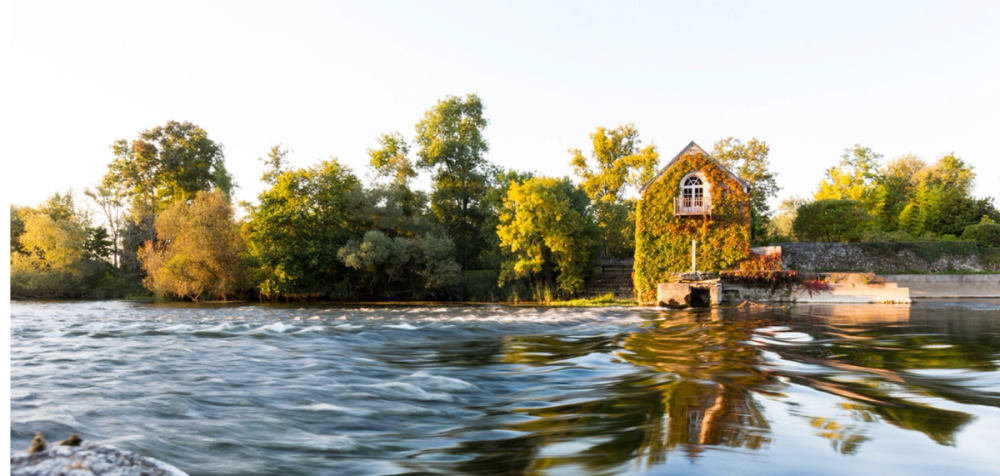
The Loire Valley continues to attract 1000s of tourists a year to its vineyards and beautiful towns
Despite the challenges outlined by the panel, they still felt the Loire has much to offer UK consumers.
“Overall I feel the Loire is pretty well placed to provide wines that suit consumer tastes,” says Dougherty. “They all share a sense of freshness, even in the reds, which chimes with what today’s wine drinkers are increasingly looking for. There are certainly challenges – the greater exposure to weather extremes has caused well-documented problems with frost, hail, rot etc. A warming climate may pose a challenge to producers to continue making the lighter, fresher style they are known for.”
The changing climate is, though, raising questions about which grape varieties are best suited to succeed in the Loire.
It is a challenge that Domitille Coste de Bagneaux says the region’s producers are ready to take on and adapt. “It is something we will have to do.”
She adds: “In terms of profile, climate change is making the reds riper and this is a positive thing because we need the tannins to be ripe.”
But she also says the changing climate means a plot of land that was good for producing a certain grape variety might not be able to do so in the future.
“In the Loire we need and want some freshness in our wines and if we are not careful we are in danger of losing that.”
But as Taylor says: “Climate change has made alcohol levels rise a lot in many areas, but freshness remains in the Loire. Many drinkers, both young and old, are looking for fresher styles which are less dense and lower in alcohol and with more drinkability.”
And the Loire ticks all those boxes…
- To find out more about the Loire go to Loire Valley Wines website here.
